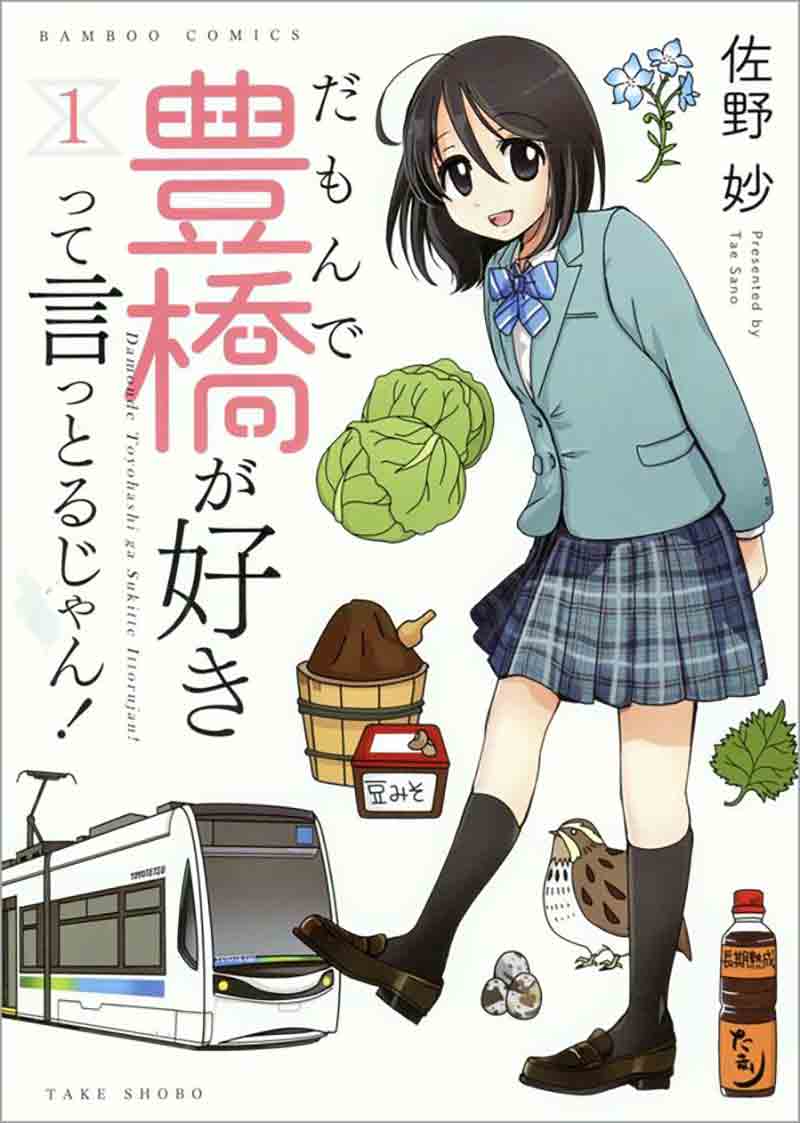
November 28, 2021
Manga comics set in small towns across Japan have been gaining in popularity, as a four-paneled window into the vibrant yet lesser-known cultures that thrive outside of Tokyo’s gravitational pull. Coinciding with a growing interest in relocation from cities to the countryside, the genre takes readers on a vicarious tour of local dialects, dishes and even the friendly regional rivalries that can be found across prefectural lines.
“Rokaru Joshi no Toboe” (Growl of Local Girl) by Mizuki Setoguchi was a forerunner to the local manga boom. First serialized in 2014, “Growl of Local Girl” tells the story of a woman who quits her job in Tokyo and returns to her hometown in Shizuoka Prefecture.
The manga depicts regional differences from the rest of Japan by introducing transplants, such as the woman’s colleague from Tokyo. But it also highlights the breadth of variance that can be found within Shizuoka Prefecture itself, which stretches wide from east to west.
Occurrences familiar to locals are harvested as a source of comedic culture shock, such as one episode where company employees take time off work to help their farmer parents pick tea leaves — after all, Shizuoka is one of the nation’s top tea-producing regions.
In another episode, characters from neighboring Yamanashi Prefecture compete over which prefecture affords the best view of Mt. Fuji.
Setoguchi lives in Yaizu, Shizuoka Prefecture. She originally created the series to portray the unique challenges faced by women around 30 years old in rural regions, but over time, gradually came to play up the regional culture clash element.
“I set the story in Shizuoka because it’s my hometown, so there are plenty of things to write about,” Setoguchi said. “I knew that it has a distinct culture that’s not well-known outside the prefecture.”
The manga can be read in serialization in a comic magazine published by Houbunsha Co., and as individual books, the eighth volume of which will be published next month.

“Damonde Toyohashi ga Sukitte Ittorujan!” by Tae Sano
The local manga boom has been further fueled by the success of story gag manga such as “Tonde Saitama” (Fly me to the Saitama) and “Omae wa mada Gunma o Shiranai” (You don’t know Gunma yet), which were both made into movies.
Most manga in the genre still tend to take place in prominent regional cities such as Nagoya, Hiroshima and Fukuoka.
But some are set further off the beaten path.
“Damonde Toyohashi ga Sukitte Ittorujan!” by Tae Sano shines light on Toyohashi, a city in the eastern part of Aichi Prefecture, known for agriculture and a simpler way of life. The title means, “So I told you that I like Toyohashi!”
The series started in 2019 at the suggestion of Takeshobo Co. editor Yutaka Kaeriyama, who took an interest in Sano’s dialectal differences in Toyohashi — for example, how schoolchildren in Toyohashi call recesses during the school day “hoka,” a word that elsewhere in Japan just means, “after school.”
“I used to think there wasn’t anything special about Toyohashi,” Sano said. “But when I started to make the manga, I was surprised to find that there was a lot of interesting material to use as inspiration.”
About a high school girl who moved to Toyohashi as a transfer student, the manga’s story arcs introduce various trivia tidbits, such as how the city is said to be one of the birthplaces of the “morning” breakfast set that is now ubiquitous at cafes nationwide. There are also cameos by local specialties like quail eggs and Black Thunder, a chocolate cookie bar that hails from Toyohashi and enjoys popularity all over the country.
The manga depicts the hometown pride of the locals, who are set in their ways and also quick to point out that Toyohashi has its own distinct identity separate from Nagoya, the prefecture’s capital.
The local community has embraced the manga “Damonde Toyohashi,” which can be found proudly promoted in shop windows everywhere in the city from bookstores to confectioneries, selling through multiple reprintings.
Makoto Kurosawa, editor of “Growl of Local Girl,” said: “Four-panel comic strips have, from the outset, cheered readers up with their lighthearted depictions of small vignettes from everyday life. I think that’s why the genre is so conducive to capturing the feel of local life.”
“An artist’s love for their hometown is key to local manga,” said Kaeriyama. “I hope such manga will help contribute to the revitalization of local regions.”
"Culture" POPULAR ARTICLE
-

Van Cleef & Arpels Dazzles with Art Deco Artisanry at Tokyo Exhibit
-

Disney’s ‘Twisted-Wonderland’ Animated Series Puts Villains in Spotlight: New Show Features School Inspired by Classic Disney Films
-

Japan Plans to Distribute Manga Overseas Via New Platform
-

Ayumi Hamasaki’s Shanghai Concert Canceled Day Before Schedule as Part of Beijing Backlash
-

‘The World Masterpiece Theater Series’ Celebrates 50 Years; Animator Looks Back on Creating Anime Classics
JN ACCESS RANKING
-

Tokyo Economic Security Forum to Hold Inaugural Meeting Amid Tense Global Environment
-

Keidanren Chairman Yoshinobu Tsutsui Visits Kashiwazaki-Kariwa Nuclear Power Plant; Inspects New Emergency Safety System
-

Imports of Rare Earths from China Facing Delays, May Be Caused by Deterioration of Japan-China Relations
-

University of Tokyo Professor Discusses Japanese Economic Security in Interview Ahead of Forum
-

Japan Pulls out of Vietnam Nuclear Project, Complicating Hanoi’s Power Plans



◎上海の日本アニメイベント_20251129YGTGS000921_C-250x168.jpg)






















